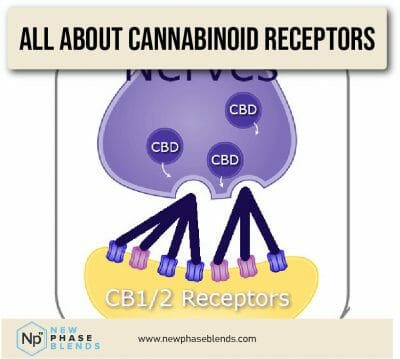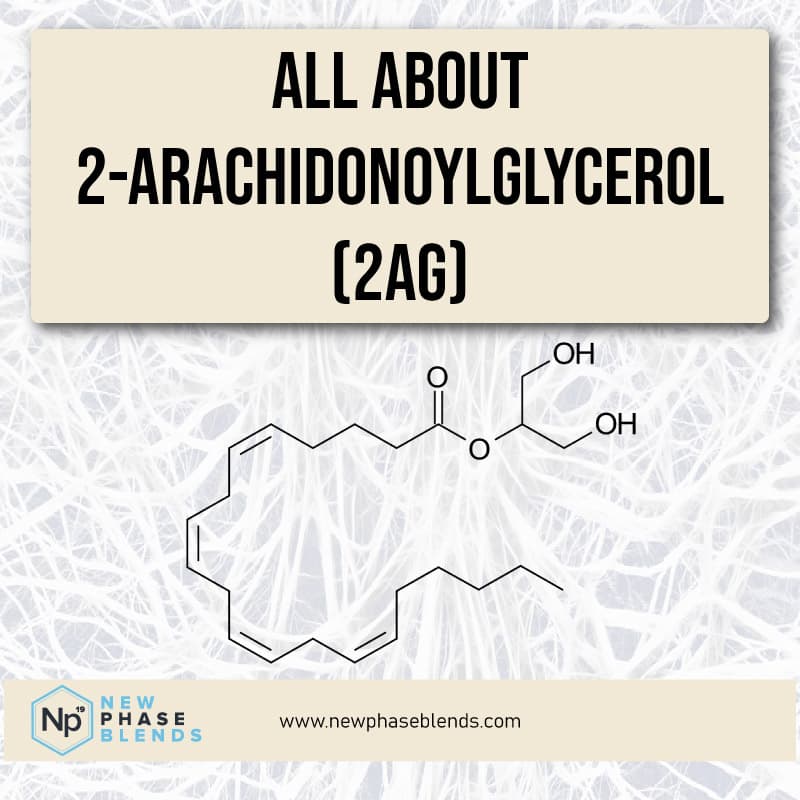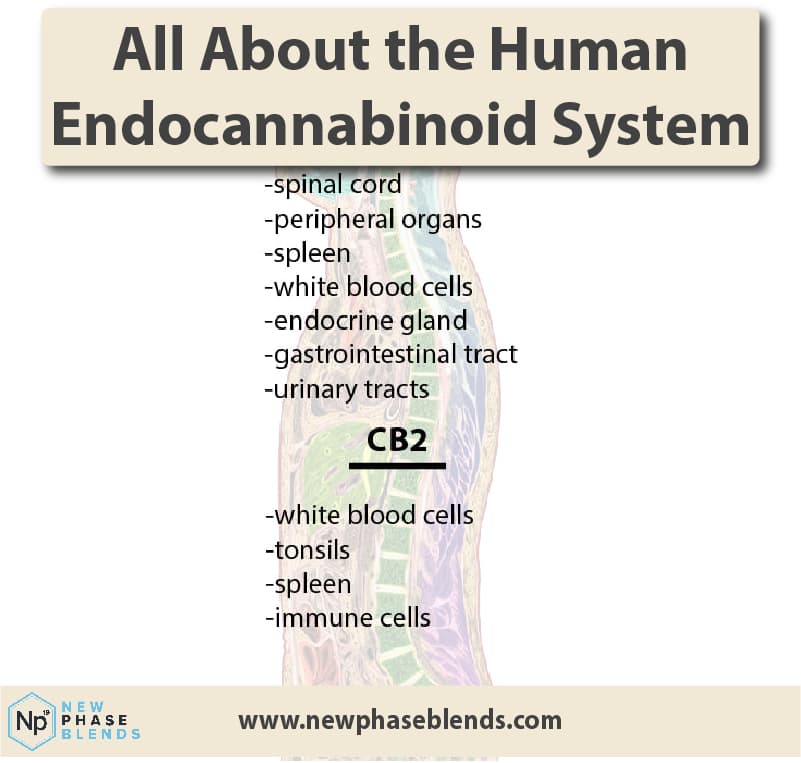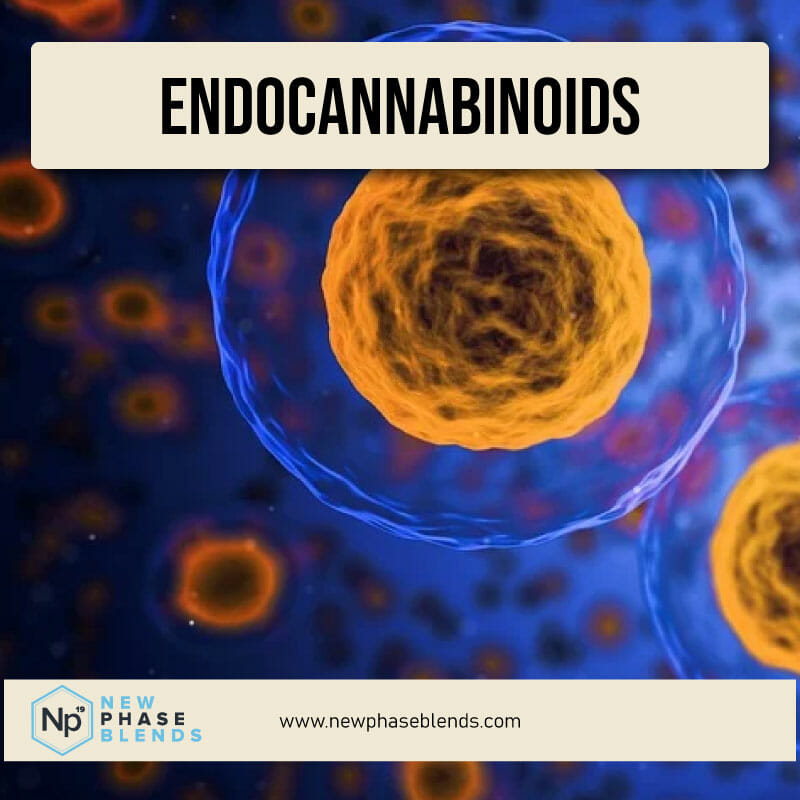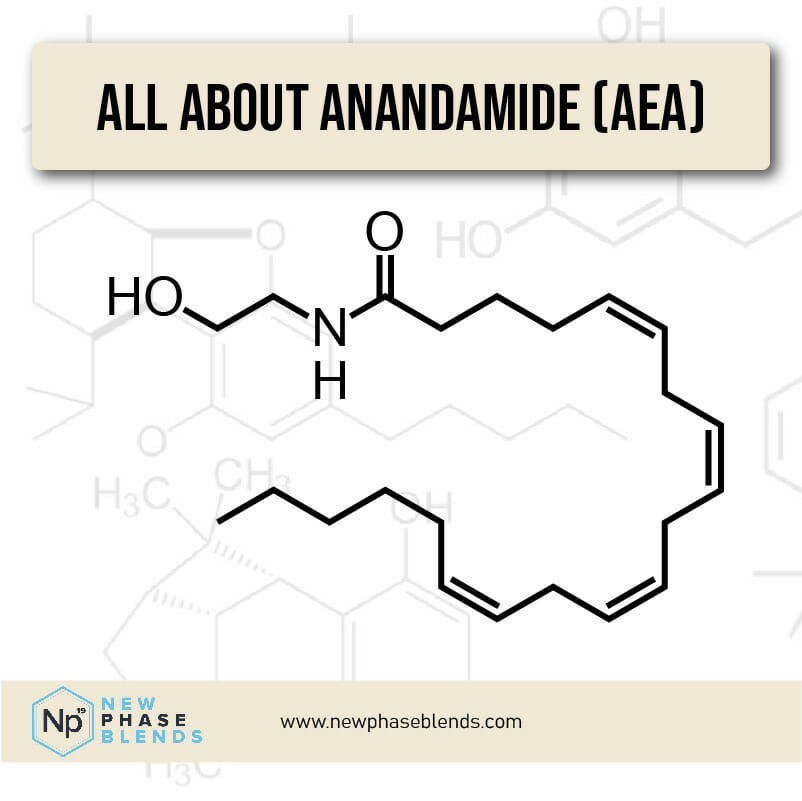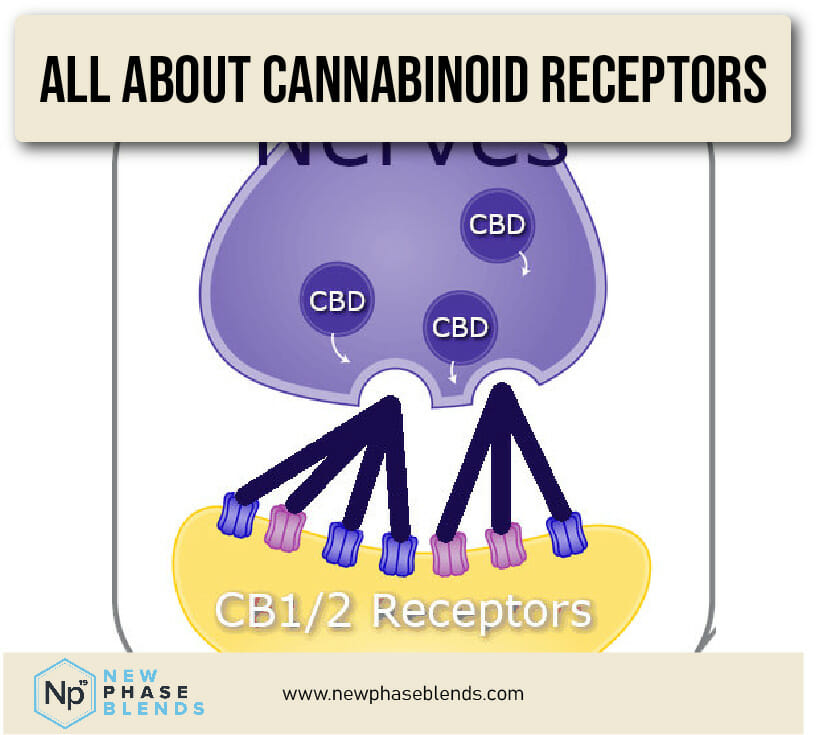While you might’ve heard about hemp, cannabis, and CBD products, have you ever heard why these substances work so well for so many people? This is, in a nutshell, thanks to our cannabinoid receptors.
Consider this article your quick (but informative) science lesson for the day.
TL;DR – There are two cannabinoid receptors known as the CB 1 and CB 2 receptors. They make up what’s called the endocannabinoid system which humans (and all animals) have. Depending on which cannabinoids are processed, and which receptors are targeted, people can feel different effects.
Cannabinoid receptors: what are they, why do we have them, and how do they relate to cannabis and CBD?
We’ll talk about all this, and more, in this blog on the cannabinoid receptor makeup, and some cannabinoid research.
What is a Cannabinoid Receptor?
A cannabinoid receptor is classified as g protein coupled receptors that are located throughout the body. You can think of G proteins as switches that are inside cells, which activate cellular responses.
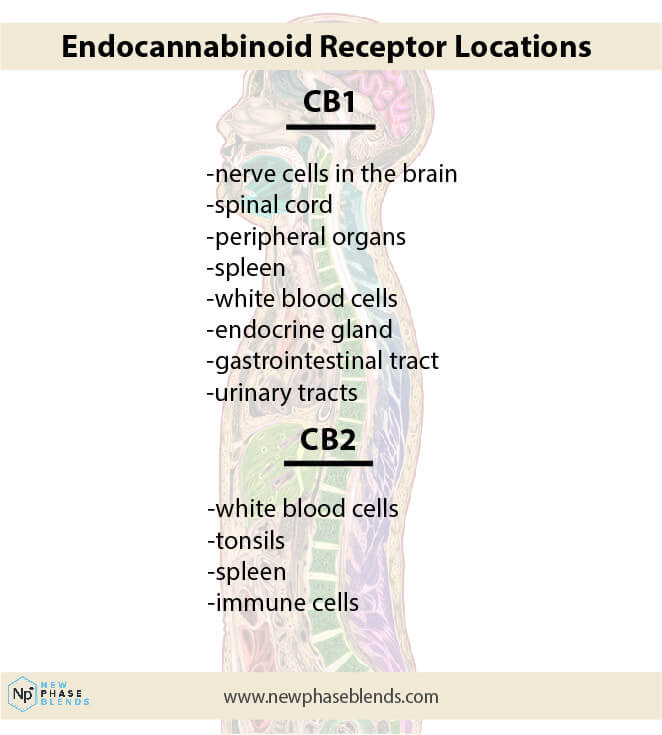
There are two receptors which accomplish both endocannabinoid signaling and cannabinoid signaling by interacting with different chemicals within our bodies. We’ll get more into this later on.
The two different receptors are known as: CB 1 receptors and CB 2 receptors, and they make up what’s known as the endocannabinoid system.
Scientists think there may even be other receptors that we haven’t discovered yet.
The Endocannabinoid System (ECS) Explained
This is an endogenous cannabinoid system that we all have. On a basic level, the ECS helps the body achieve balance (homeostasis). All of the CB1 and CB2 receptors make up this complex system of cells that communicate with each other.
Endocannabinoid receptors are located all over the body, with a bulk of them being in the central nervous system and immune cells. The receptors mediate different responses, depending on a few different factors.
CB 1 receptors and CB 2 receptors manage messages between the brain and the body to react to internal and external situations. For example, the Human Endocannabinoid System regulates hunger signals so that you know when your body needs fuel. The receptors assist in this type of process.
There is much, much more to cannabinoid physiology and the enzymes involved in this process, but this should at least help paint the picture for you.
Why Do We Have Cannabinoid Receptors?
Cannabinoid receptors help with several functions of the human body including appetite, mood, and memory. These receptors are an integral part of the endocannabinoid system (ECS) which is a network of neurotransmitters.
Cannabinoid Receptors in the Brain
Cannabinoid receptors can be found in several places throughout the body including the lungs, liver, and brain. Within the brain, there are cannabinoid receptors in different locations which are responsible for different body functions.
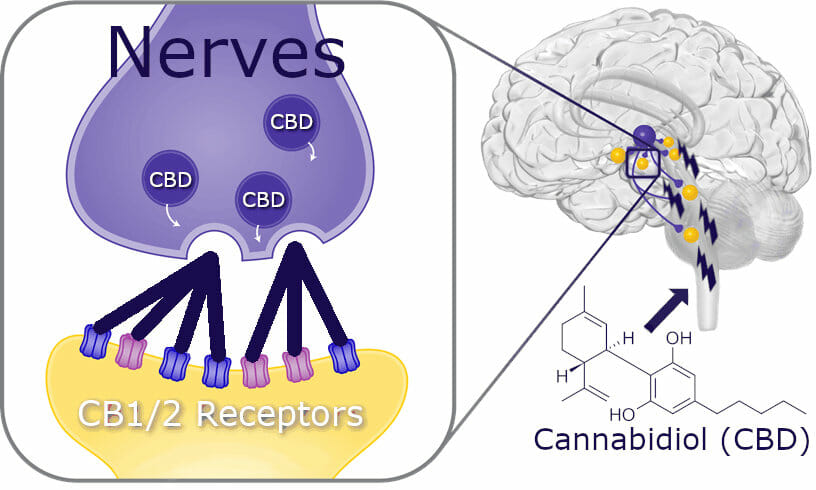
For example, receptors near the hypothalamus in the human brain help us learn new things and maintain memory while receptors in the basal ganglia control locomotor function and reward pathways.
Scientists think there may even be a peripheral receptor that is still yet to be discovered. If there were, it would explain a lot about the binding behavior of cannabinoids.
For example, CBD appears to either bind to other cannabinoid receptors, but we just can’t figure out exactly where they are, yet.
CB1 and CB2 Receptors
As I mentioned earlier, there are two main types of cannabinoid receptors: CB 1 receptors and CB 2 receptors. These receptors are, largely, why supplementing with cannabinoids like CBD or CBN result in therapeutic benefits, like pain modulation.
To make matters more complex, the CB 1 receptor and CB 2 receptor also have different effects on the body. CB 1 receptors are usually associated with the central nervous system and can help with things like pain relief. CB 2 receptors are associated with anti-inflammatory effects and may help the immune system.
Also, when certain cannabinoids stimulate the CB 1 receptors, there can sometimes be a psychoactive effect. For example, the functional selectivity of THC by the CB 1 receptor is why when people smoke marijuana, they get high. Receptor binding activity favors THC.
When you read about cannabis sativa and CBD products, you will notice that products are separated between psychoactive and non-psychoactive formulas. If a product contains large amounts of THC, it will be psychoactive.
Recent evidence shows that the differences are largely related to which receptors the cannabinoids bind to – CB 1 or CB 2.
Cannabinoid Receptors and CBD Use
Both phytocannabinoids and endocannabinoids bind to cannabinoid receptors.
What are the differences, you ask?
- phytocannabinoids are plant chemicals that are largely derived from the cannabis plant. Cannabidiol (CBD), Cannabigerol (CBG), and Cannabinol (CBN) are examples of phytocannabinoids
- endocannabinoids are produced by the body, all by itself. Anandamide (AEA), and 2-arachidonoylglycerol (2-AG) are the two main endocannabinoids that we know about.
Biological sciences show the binding site depends on where the cannabinoid receptor is in the body, and which endocannabinoid it binds to.
For example, endocannabinoids could target receptors near the spine to reduce pain or inflammation in the lower back, as an example of a couple different beneficial effects.
Tetrahydrocannabinol (THC) binds with CB 1 receptors and causes highly psychoactive effects, whereas CBD does not.
Researchers are not sure exactly which receptors CBD binds to but they have documented several therapeutic effects of CBD including pain and stress relief.
Finally, the type of cannabinoids used, and the frequency of their use play a critical role in potential therapeutic targets on our body.
Endogenous Cannabinoids
As mentioned earlier, Anandamide and 2-arachidonoylglycerol are the two endocannabinoids that our bodies produce on it’s own.
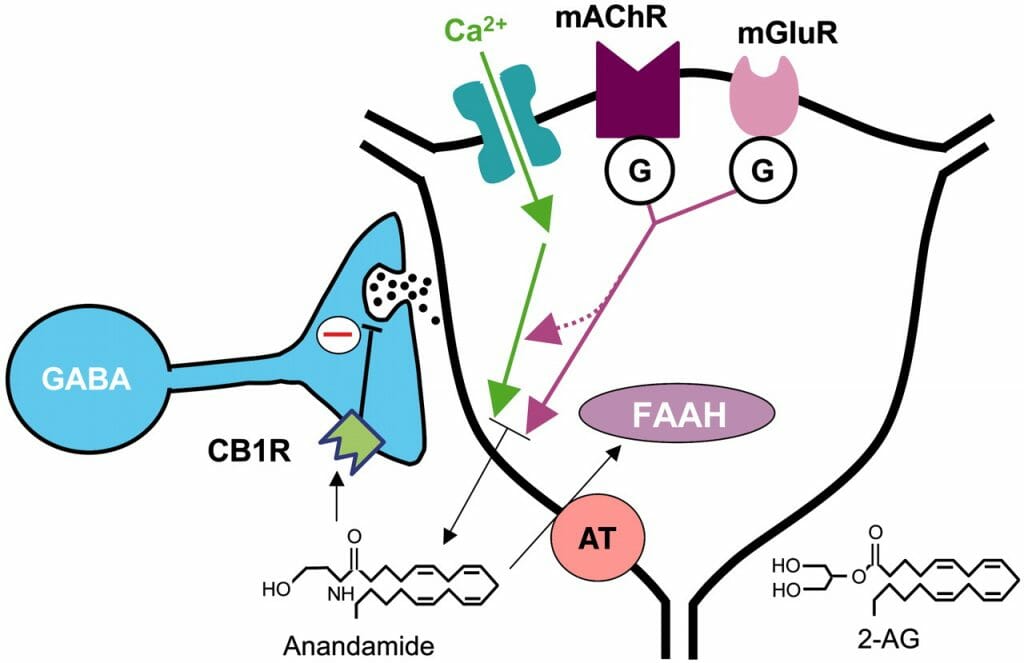
Fatty acid amide hydrolase (FAAH) breaks down into anandamide, as discovered in 1993.
There are many therapeutic implications when these endocannabinoids bind to receptors. For example, study results suggest that Alzheimer’s disease could potentially be treated through stimulating endocannabinoid receptors.
While more studies are needed, we are definitely heading in the right direction.
Summary – Functions of Cannabinoid Receptors
In a nutshell, both endo and phyto cannabinoids bind to the CB 1 and CB2 cannabinoid receptors which results in therapeutic potential.
Remember, endocannabinoids are made by our bodies, naturally, and phytocannabinoids come largely from the cannabis plant. The biological effects from using cannabinoids varies, depending on which receptor it binds to, and which cannabinoid binds.
These receptors are part of the ECS, which helps the body regulate functions like food intake, sleep, behavioral effects, and memory processing.
Unlike THC, CBD does not bind to CB1 or CB2 receptors. Researchers are still studying the effect of CBD on receptors in this system.
Want more content? Browse the best CBD blog on the internet. With over 315,000 words (and growing!), you’re sure to find something else that grabs your interest.
References
Glass M, Dragunow M, Faull RL. Cannabinoid receptors in the human brain: a detailed anatomical and quantitative autoradiographic study in the fetal, neonatal and adult human brain. Neuroscience. 1997 Mar;77(2):299-318. doi: 10.1016/s0306-4522(96)00428-9. PMID: 9472392.
Yudowoski and Kendall. Cannabinoid Receptors in the Central Nervous System: Their Signaling and Roles in Disease. Front. Cell. Neurosci., 04 January 2017 | https://doi.org/10.3389/fncel.2016.00294
Journal of Young Investigators: The Endocannabinoid System, Our Universal Regulator.



